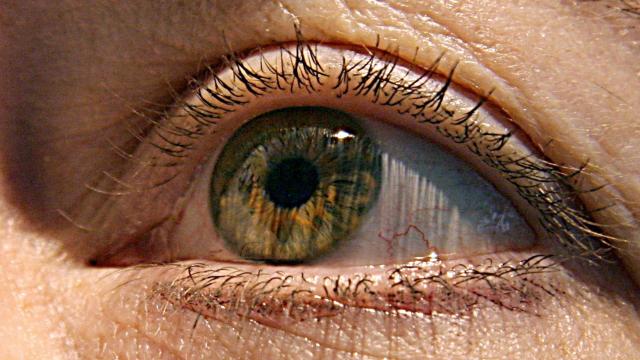Old crumbling stone buildings. Spidery webs of light. Bright faces that morph between animal and human and back again. All imagery you might see if you’re in the middle of a mushroom trip, but also what you might see if you check out the “Ganzflicker” — an intense, red and black flickering screen that anyone can access online.
Though the aforementioned flicker has been used in psychology experiments since 2011, this most recent iteration was put online by a group of German and UK-based researchers who presented their research in the journal Cortex earlier this month. Their goal, as part of an ongoing experiment, is to figure out why this red and black flash causes some people’s brains to hallucinate vividly, while others only see… a red and black flash. (People who experience seizures induced by flashing lights should stay far away.)
According to the researchers behind the study, what you see — and how vividly you’ll see it — boils down to the behaviour of your visual cortex, which is the part of your brain responsible for processing all visual info, including optical illusions. Writing for The Conversation last week, one of the researchers, Reshanne Reeder, explained that this chunk of the cortex is very good at “filling in the blanks” in our perception. It’s the visual cortex that allows us to fill in blind spots just outside our vision, for example, or that “fills in” missing space if you lose the ability to see in one of your eyes.
Being able to mentally fill in these sorts of blanks with your own mental imagery, the researchers said, is an example of a “high-level” cognitive process that this cortical chunk is responsible for while determining whether a line is vertical or horizontal is a “low-level” process. As Reeder explained:
High-level processes can interact with low-level processes to shape your brain’s interpretation of what you are seeing. If someone sees simple pseudo-hallucinations in the Ganzflicker, their brains may automatically interpret that information as more meaningful or realistic with help from their mind’s eye.
In other words, the reason I’d seen some weirdly realistic green plants after staring at the Ganzflicker for all of five minutes is simply a sign that my visual cortex is just trying to patch together some sort of pattern in the random flashes of red and black that I’m staring at. You’ll probably see something completely different, just because everyone’s brain anatomy is slightly unique, and everyone’s own perception of the world around them is, too.
Hopefully, studies like the Ganflicker can teach us more about why that might be the case. If you try out the flicker for yourself, feel free to fill out the associated questionnaire, which mostly asks questions about how you’d describe your own mental imagery, and what you saw in the flicker, if anything.
